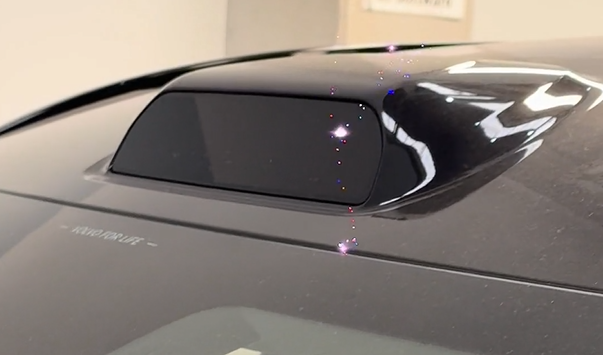
We’d like to warn you right away, don’t do it again. It is also better not to do it accidentally. Jeguetelli from Reddit conducted an interesting but unpleasant experiment with lidar.
Lidar is an acronym for Light Detection and Ranging. The device is used in autopilot cars to detect surrounding objects. Sensors emit a constant stream of infrared rays to measure distance, and a computer uses the data to create a 3D reconstruction of the environment. Humans cannot see the rays because of their wavelength, but cameras are sensitive to them.
When the camera focuses on the sensor mounted on the roof of the Volvo EX90, a constellation of colored dots appears in the image, exactly where the lidar flashes were visible. And this is not a glare or some digital effect — it is physical and irreversible damage to the camera.
«Never take a video of the new Ex90 because you will break your cell phone camera. Lidar lasers will burn your camera», — Jeguetelli writes.
Yes, camera sensors can be damaged, but only if you shoot up close or use a long-focus (narrow-angle) lens. In the video, you can see that the damage disappears when the camera moves away — it switches to an undamaged wide-angle lens. Manufacturers, such as Volvo, warn of this potential damage in their manuals, but not everyone reads them.
Futurism recalls that in 2019 Ars Technica wrote about the case of a self-driving car engineer who discovered that the sensor of his $2000 Sony camera had failed after attending CES, where he was filming vehicles equipped with lidars.
But don’t worry about your own eyes – the rays of car lidars are harmless to them. Volvo’s particular lidar uses lasers with a wavelength of 1550 nm, and they cannot even reach the retina.
As a reminder, Tesla does not use lidars, but instead uses cameras to detect the surroundings of Elon Musk’s cars. Potentially, this can create dangerous situation on the road, but the experiments give conflicting results.

Spelling error report
The following text will be sent to our editors: